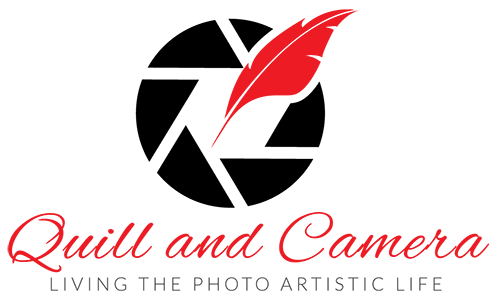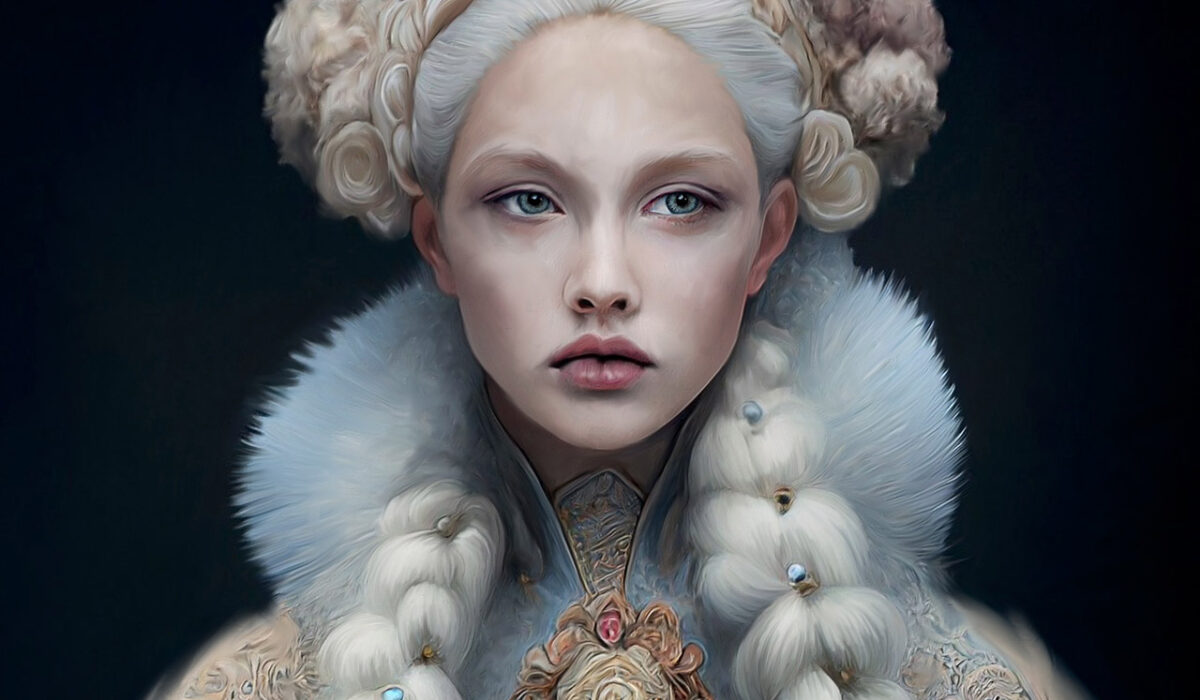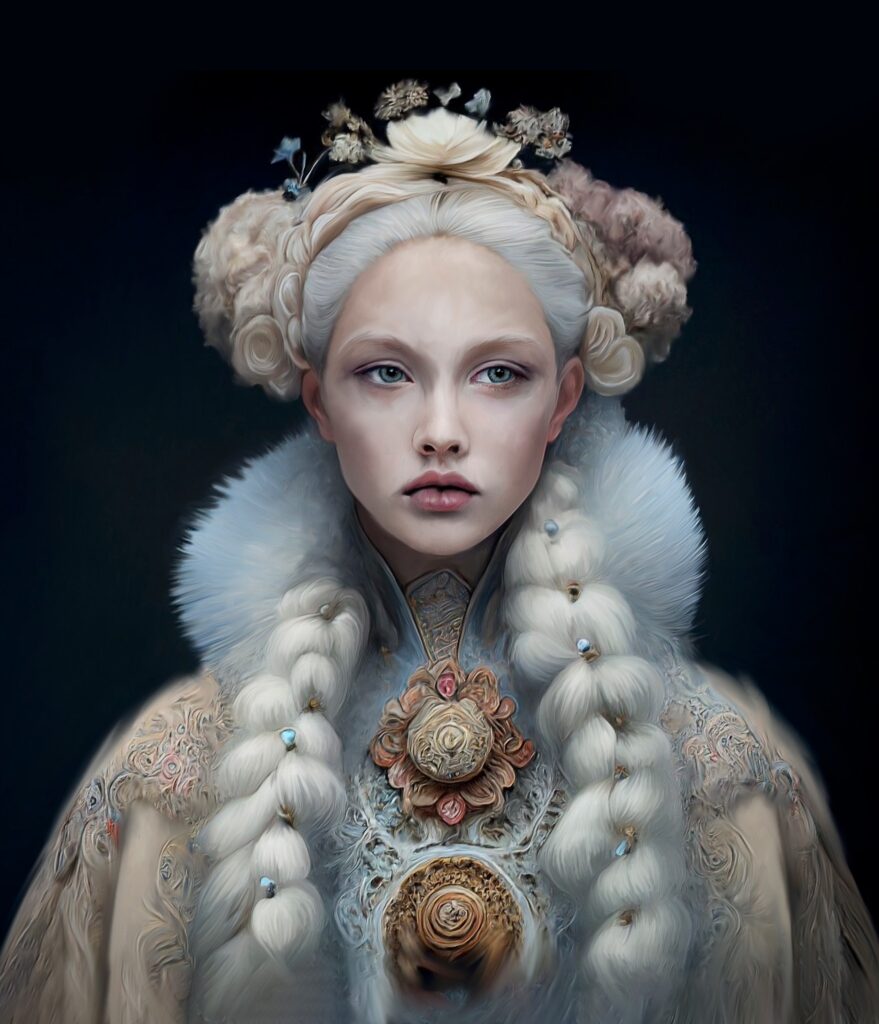— My forever refrain is and shall remain, “Generated content in AI is fine (very much like acquiring stock images), but you must DO something creative with it. You are here to live an ARTISTIC LIFE, not an AI-generated life.”
This normally amounts to creating models and content ready to extract and carry over into Photoshop, where you then make your own artistic decisions in building out the canvas, layering additional material, carrying it through post-production. In short, creating something of your own with it.
But there IS another path.
And that path involves the careful artistic application of Photoshop’s most powerful artistic tool: The Mixer Brush.
With the Mixer Brush you are able to literally take up a variety of brushes, control the way they perform to a positively incredible degree — very much as a traditional painter would — and lay down each and every brush stroke across the entire canvas. . . .
When you bring this kind of control to the process (and when you literally settle in and spend hours considering each and every stroke you lay down) you are able to shape the artistic results in a way that is truly astonishing. Not to mention tremendously rewarding.
And what this means is, in this instance I can see the legitimacy in taking a fully-rendered AI image and going at it with the Mixer Brush — in such a way that you actually end up reshaping the content and the presentation together.
Resulting in what is a collaboration of a whole other order.
Professional artist and instructor Jill Johnson recently recorded a short video exploring this subject for our private AWAKE group. I wanted to present it here on the blog because I think it’s an important message that deserves a wider reach.
I think Jill makes a strong case here, and really drives it home as she discusses one of her recent compositions and everything she changed in it, everything she reworked with the Mixer Brush to create the artistic canvas she envisioned — and brought to life through her own artistic talent and skill.
(You can imagine how satisfying this approach can be. In fact, Jill’s new — and already wildly popular — course on using the Mixer Brush to craft exquisite works of painterly artwork was just launched to the public. You can check out Mixer Brush Mastery here: https://prophotoshopartistry.com/mixer-brush )
Whatever materials you begin with — whether you begin with your favorite photos, with finished Photoshop compositions, or even with AI content — if it’s a painterly result you wish to create, in a very real way the artistic process can be seen to actually commence only when you take up the Mixer Brush and begin making that long series of artistic decisions:
— Which type of brush for this part here . . . and how big should it be . . . and at what angle should I be holding it, and how much pressure should I apply . . . ?
— What paint should I be mixing in, and how wet should the brush be, and should I clean the brush between each stroke . . . ?
— And what precise technique should I incorporate here if I want the results to turn out exactly the way I envision and not end up with a muddy mess?
Spend a few hours contentedly working away at a canvas in this way and you’ll come to realize just how much of your own artistic tastes and talents you are able to bring to the canvases you are creating.
Whatever the materials you start with, with the Mixer Brush you can truly make each canvas an expression of an artistic vision all your own.
~ Sebastian
.
Postscript:

This subject came up obviously right on the heels of the release of Phil Steele’s extraordinary new course on generating your own models, animals, landscapes, backgrounds, and various creative elements you can assemble into original compositions all your own in Photoshop.
(The images you see to the right were all created from Phil’s course.)
When you are not employing the Mixer Brush in your creative process, I strongly encourage our artists to stick with creating material you can easily extract and drop into a layered Photoshop file, where you can then build it out further and create something original incorporating your own decisions, your own talents.
But carrying this further with the Mixer Brush is just one more way to push compositions like these totally over the top.
And again, this is also the most rewarding approach I can imagine.
The purpose of this post is to sort of double back and just make it equally clear that as long as you are going to actively shape and rework everything over the course of several hours with the Mixer Brush, I really don’t feel it’s as artistically taboo to employ AI-generated composition as your starting point.
In a sense, it’s much the same as starting with a stock photo or a canvas of assembled content from designer kits. Only in this case you at least have more creative control over your starting point.
What matters then is what you DO with it. Where you CARRY it. How you SHAPE it.
Which is why I wouldn’t see any problem beginning with any of the sample images you see here (created by Phil Steele for his new course) . . .
So long as you then take up the Mixer Brush (employing the techniques Jill Johnson lays out so expertly in her course) and use your artistic skills across a span of long, happy hours in Photoshop to craft a finished composition you can authentically feel proud of having crafted through your own talents.
In the end the aim should remain the same: Living a fulfilling artistic life. While having the time of your life!
~ Sebastian


